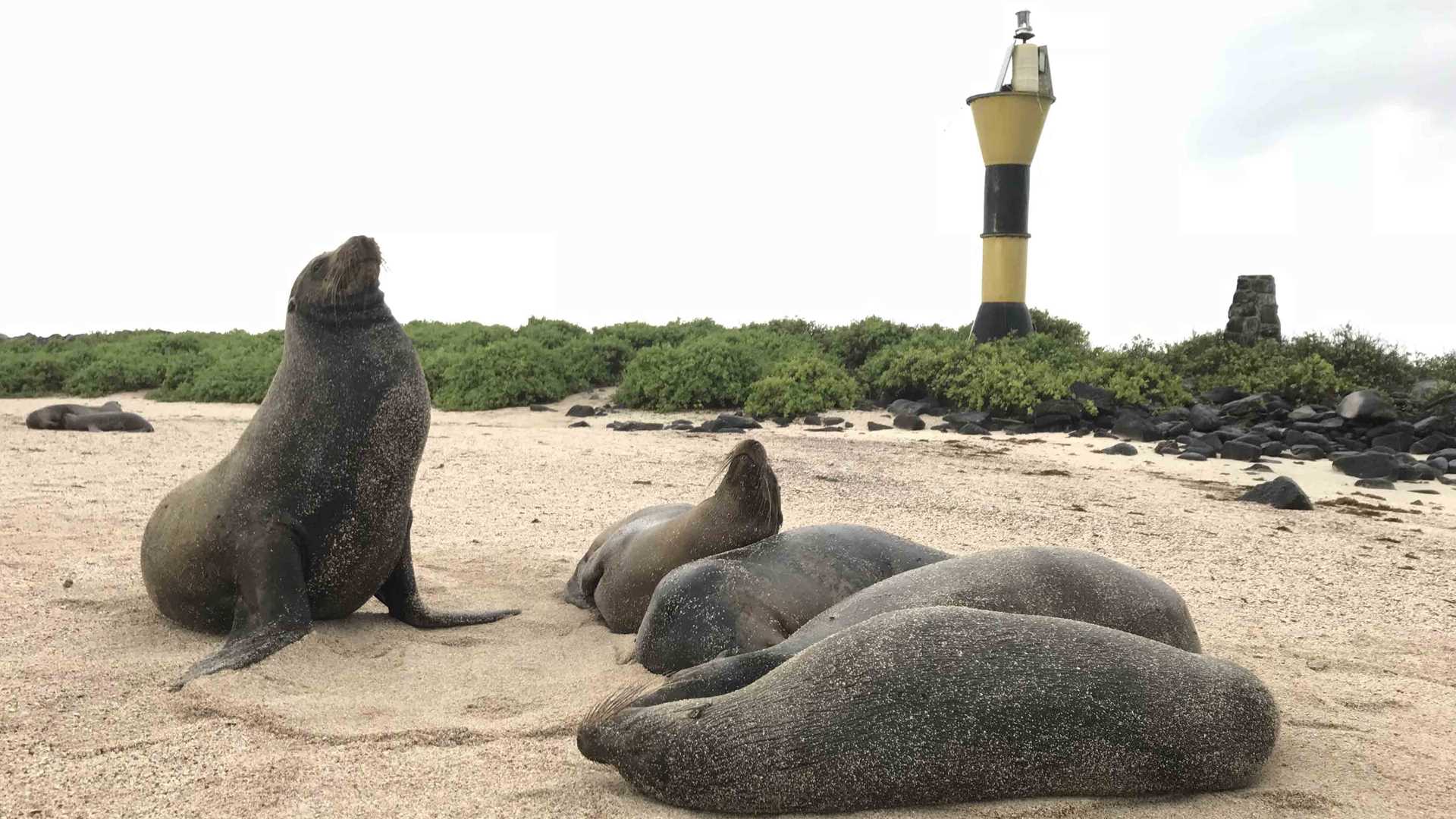Española Island, on the southeastern end of the archipelago, is an old shield volcano. This island is slowly but surely losing the battle against the elements, after drifting over 200 kilometers from its birthplace. AS of today, it is positioned on top of the Nazca plate, having drifted so far from its birth place and effectively losing all influence of the Galapagos Hotspot, the life force that fuels most volcanic activity in this group of islands. Despite being presently only a fraction of its original size, it is still home to vast numbers of sea birds, as well as an endemic species of mockingbird and lava lizard, unique not only to the archipelago, but specifically to Española. We explored the northeastern end of the island at Gardner Bay and nearby Gardner Islet during the morning and the western end at Suarez Point during the afternoon.
- Daily Expedition Reports
- 25 Feb 2018
Española Island, 2/25/2018, National Geographic Endeavour II
- Aboard the National Geographic Endeavour II
- Galápagos
Benjamin Ayala, Naturalist
Ben is a German-Ecuadorian naturalist guide who grew up on San Cristobal, the eastern-most island of the Galápagos Archipelago, home to the political capital of the province.
Read MoreCelso Montalvo, Naturalist/Certified Photo Instructor
Celso was born in Guayaquil, Ecuador. At the age of nine he arrived in the Galápagos for the first time and he was profoundly touched by nature, observation, and isolation. When he saw the sharks, rays and turtles swimming in the bay, he was trigger...
Read MoreShare Report
Exploring Galápagos
VIEW ITINERARYRelated Reports
5/21/2025
Read
National Geographic Gemini
Elizabeth Bay and Punta Moreno, Isabel Island
Overnight, after ten hours of navigation, we woke up surrounded by active volcanoes on the western side of the Galapagos Archipelago. We jumped into Zodiacs and explored a pristine and unique mangrove ecosystem. In addition to photographing unique landscapes and endemic animals, we also learned the importance of this area. By the afternoon, we headed south and reached Punta Moreno, located at the bellybutton of the sea horse. We walked on lava and explored the coastlines, then finished our day of exploration with a mesmerizing sunset.
5/20/2025
Read
National Geographic Gemini
Floreana
Today we stopped by Floreana Island, the historical capital of the Galapagos province. In the early morning hours, we started exploring the Post Office Bay coastline by kayaks and Zodiacs. Along the basaltic coastline we found emblematic animals, such as marine iguanas and flamingos. To finish the morning, we continued with the whaling mail tradition of taking and leaving postcards for hand delivery upon our return home. After a delicious lunch, we continued our day with two more activities, starting with snorkeling around Champion Islet with an abundance and great diversity of marine life surrounding us. Finally, we had a beautiful sunset walk along Cormorant Point, an ideal site to observe the coastal vegetation as well as the iconic flamingo population.









